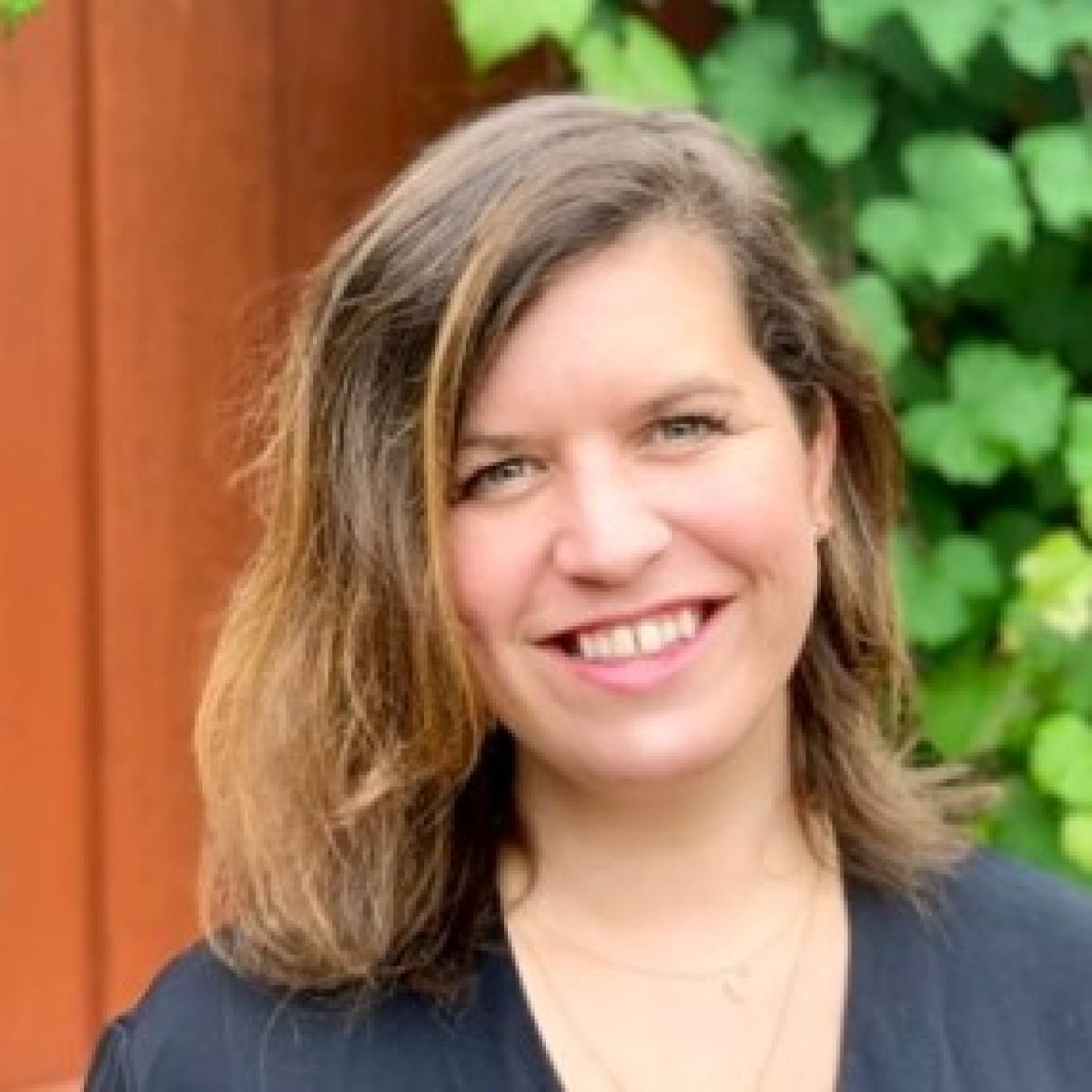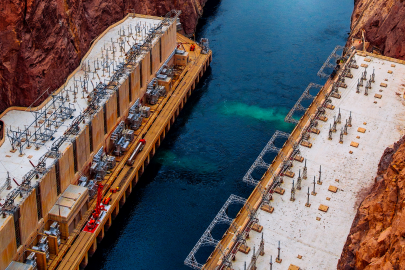This National Hydropower Day, explore ways WPTO is helping build cleaner communities and making important contributions toward the United States’ goals of achieving a carbon-free electricity sector by 2035 and net-zero-emissions economy by 2050.
Water Power Technologies Office
August 24, 2022Every American family—whether they live in a bustling hub like Atlanta, Georgia, or a frontier city like Dillingham, Alaska—should have access to reliable, affordable electricity. And as the climate crisis intensifies, causing more extreme weather events, our country’s most isolated, remote communities will likely face higher energy costs and more power outages, which can cut off vital services like clean water and heat.
That’s why the U.S. Department of Energy’s (DOE) Water Power Technologies Office (WPTO) works with people from big cities to remote villages, as well as the hydropower industry, to help build cleaner, more resilient American communities—with hydropower. This National Hydropower Day, explore a few of the ways WPTO is helping build cleaner communities and making important contributions toward the United States’ goals of achieving a carbon-free electricity sector by 2035 and net-zero-emissions economy by 2050.
Supporting the Clean Energy Transition in Remote and Island Communities
Through the Energy Transitions Initiative Partnership Project (ETIPP), DOE offices, including WPTO, partnered with 11 remote and island communities in 2021 and another 12 in 2022 to help address their local energy resilience challenges.
Many of these ETIPP communities are likely to experience more extreme weather events that can disrupt vulnerable energy systems. But because hydropower offers a reliable and affordable path to greater resiliency, various communities are looking to this dependable renewable energy source to increase their energy independence and security.
In Puerto Rico, Cooperativa Hidroelectrica de la Montana members plan to build a microgrid—a smaller grid designed to serve a specific area, like a single city—around their hydropower facility. The project will help deliver more cost-effective, reliable energy to residents across four remote, inland mountain communities and create local jobs, too.
Thousands of miles away, in Dillingham, Alaska, residents pay high diesel prices. To offset some of the financial and environmental burdens associated with using diesel, community leaders will engage experts working with ETIPP to explore the impact and benefits of building a hydroelectric project on the Nuyakuk River so the town can access local, affordable, renewable power.
Incentivizing the Production of Electricity from Hydropower
Today, most U.S. dams do not produce power. Adding generation equipment to these sites could add up to 12 gigawatts of new hydropower capacity to the U.S. electric system and provide reliable, affordable power to communities, including those with inadequate electric service.
The Hydroelectric Production Incentive Program incentivizes developers to pursue this potential resource by providing funding for projects adding hydroelectric power generating capabilities to existing dams and other water infrastructure throughout the United States. In Fiscal Year 2020, WPTO distributed $7 million in incentive payments to 42 hydroelectric facilities across 18 states through this program.
Enhancing Hydropower Flexibility and Overall Grid Resilience
WPTO also supports hydropower projects that aim to improve operational flexibility, value, and overall grid resilience. In 2021, WPTO selected three industry partners to receive technical assistance for projects focused on improving hydropower’s value through informed decision-making. These project teams are working to evaluate the benefits of adding hydrogen technologies to existing hydropower facilities, strengthen the ability of production models to assess hydropower’s value, and improve hydropower operations and dispatch planning using inflow forecasting tools.
Another project supported through WPTO’s HydroWIRES Initiative demonstrated how hydropower—especially small hydropower—could provide electricity during regional grid disruptions. After a power outage left many Idaho residents without electricity in freezing temperatures, Idaho Falls Power, in partnership with Idaho National Laboratory, analyzed how the utility’s five small hydropower plants could help keep electricity flowing. These first-of-a-kind tests showed that small hydropower plants, combined with energy storage, could provide critical backup power for customers.
While hydropower comes with big energy benefits—like black-start capabilities and on-demand power—these facilities can provide even more opportunities to build cleaner communities. Hydropower can, for example, help communities manage and store water supplies, irrigate farms with clean energy, restore and clean up the environment, and power wastewater treatment plants. WPTO is helping us understand the great potential of these alternative hydropower opportunities.
And although we are already seeing the impact of the work WPTO is funding to develop and advance hydropower, we continue to build on this portfolio. This month, we announced several new major funding initiatives through our Hydropower Program to reduce environmental impacts, advance technologies for non-powered dams, and expand on hydropower’s grid activities through pumped storage innovation.
With traditional hydroelectric production and beyond, hydropower can help provide American communities with the support they need to become clean energy leaders. On this National Hydropower Day, it’s clear hydropower is already helping build the clean energy future we need—one community at a time.
Stay up to date with the latest hydropower funding opportunities, events, and news by subscribing to the monthly Hydro Headlines and bimonthly Water Wire newsletters.
Jennifer Garson

Jennifer is the Director of the Water Power Technologies Office at the U.S. Department of Energy, where she leads the office’s strategy, management, and execution of the $150M office. The Water Power Technologies Office advances research, development and demonstration of hydropower and marine renewable energy. For the last three years, she has led some of the office’s key activities and initiatives—like the Powering the Blue Economy initiative—and a portfolio of prizes, interagency grants, among other programs. She has focused on increasing the impact of federal funding for supporting innovation, including leveraging nontraditional financial mechanisms. This includes increasing the utilization of prizes, creative lab-directed funding, SBIR/STTRs, and other competitive solicitations. Over the last decade, she has worked across DOE, the federal government, and in partnership with the private sector to launch and create new programs, prizes, and commercialization approaches for blue economy and cleantech technologies and applications.
Prior to the Water Office, she was the Chief of Staff for the Deputy Assistant Secretary for Renewable Power in the Office of Energy Efficiency and Renewable Energy. She was previously a Senior Advisor for the U.S. Department of Energy Office of Technology Transitions, focused on Department-wide strategies for increasing the use of prizes, challenges, and other open innovation tools. She also focused on catalyzing new networks and prizes to help entrepreneurs move their technologies from research institutions into the market in the Office of Energy Efficiency and Renewable Energy Technology to Market team. Her programs supported hundreds of startups across the country through novel training programs, competitions targeted at university students, challenges linking solutions to major corporate partners, supporting early-stage pilots helping validate companies' technologies, and creating new national and regional networks.
She served as a policy and market analyst in the Office of the Chief Financial Officer, developed analysis and provided technical assistance for the Office of Electricity Delivery and Energy Reliability on their smart grid portfolio during the Recovery Act, and served as a research assistant for a private consulting company.
Jennifer earned her B.A. in Anthropology and Environmental Studies Concentration at Kenyon College and her Master of Public Policy at George Washington University.
Articles by Jennifer Garson
-
 This National Hydropower Day, explore ways WPTO is helping build cleaner communities and making important contributions toward the United States’ goals of achieving a carbon-free electricity sector by 2035 and net-zero-emissions economy by 2050.
This National Hydropower Day, explore ways WPTO is helping build cleaner communities and making important contributions toward the United States’ goals of achieving a carbon-free electricity sector by 2035 and net-zero-emissions economy by 2050. -
 WPTO Director Jennifer Garson discusses WPTO’s investments in efforts led by industry, academia, and our national laboratories to advance our understanding and development of water power systems and technologies.
WPTO Director Jennifer Garson discusses WPTO’s investments in efforts led by industry, academia, and our national laboratories to advance our understanding and development of water power systems and technologies. -
 Water Power Technologies Office (WPTO) Director Jennifer Garson presents the 2020-2021 WPTO Accomplishments Report, which highlights achievements from WPTO-supported research across its Hydropower and Marine Energy programs.
Water Power Technologies Office (WPTO) Director Jennifer Garson presents the 2020-2021 WPTO Accomplishments Report, which highlights achievements from WPTO-supported research across its Hydropower and Marine Energy programs. -
WPTO is working harder to protect, understand, and leverage the immense power and promise of the ocean.
-
The Cleantech University Prize Collegiate Competition has traveled coast-to-coast over the past four months to find America’s next clean energy entrepreneurs. Meet the teams that will compete for $100,000 in prizes at the National Competition this we...
-
Energy Department competition supports student entrepreneurs and helps spur development of new clean energy technologies.
-
The Cleantech University Prize recently made two stops along the Interstate 95 corridor, with regional competitions in New Jersey and Boston. With just two regional competitions remaining, Cleantech UP teams are inching closer to the national competiti...
-
Forty-two companies with promising energy and other cutting-edge technologies collected more than $1.69 million at the 2016 Rice Business Plan Competition in Houston, Texas, capping an annual event billed as the world’s richest and largest graduate-l...
-
NovoMoto, a student-led startup from the University of Wisconsin-Madison, took home $50,000 after winning the Energy Department's Cleantech University Prize regional competition at the annual Clean Energy Trust Challenge in Chicago. NovoMoto's MicroPla...
-
The Energy Department's Cleantech University Prize competition traveled to the campus of Carnegie Mellon University in Pittsburgh for the first-eve...
-
Heating and air conditioning -- an $11 billion industry in America -- accounts for 5% of domestic energy use.

